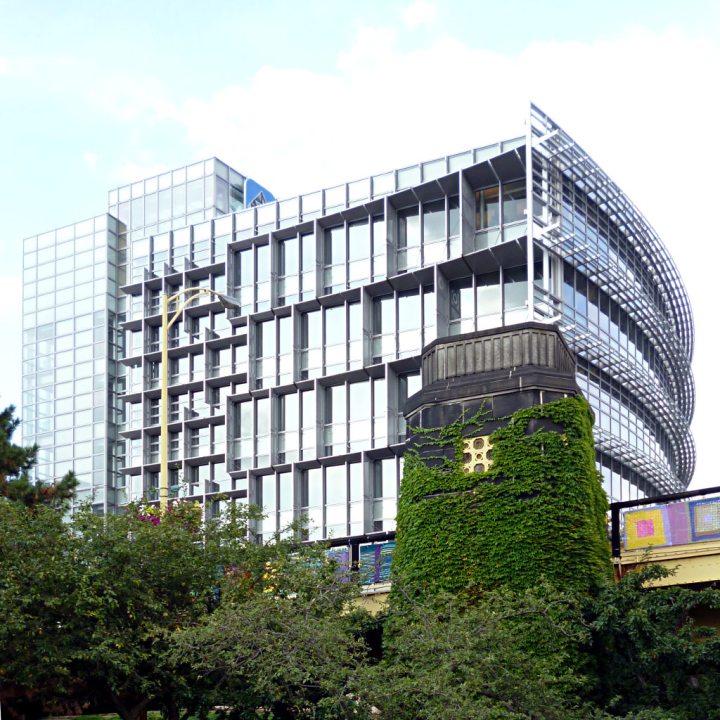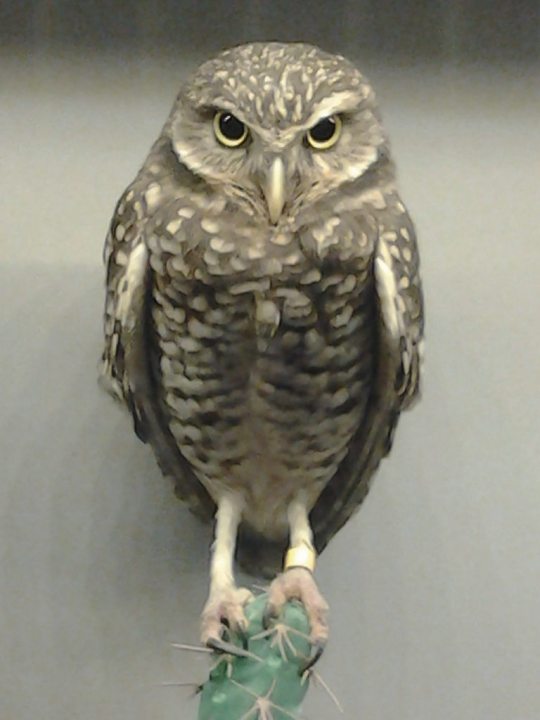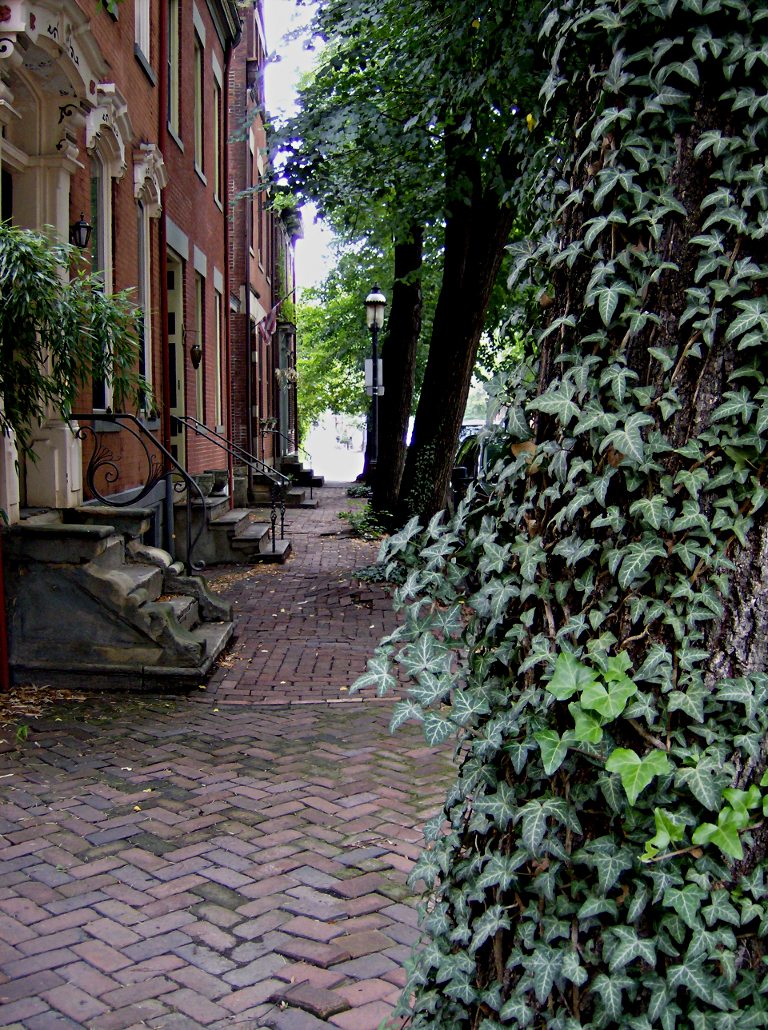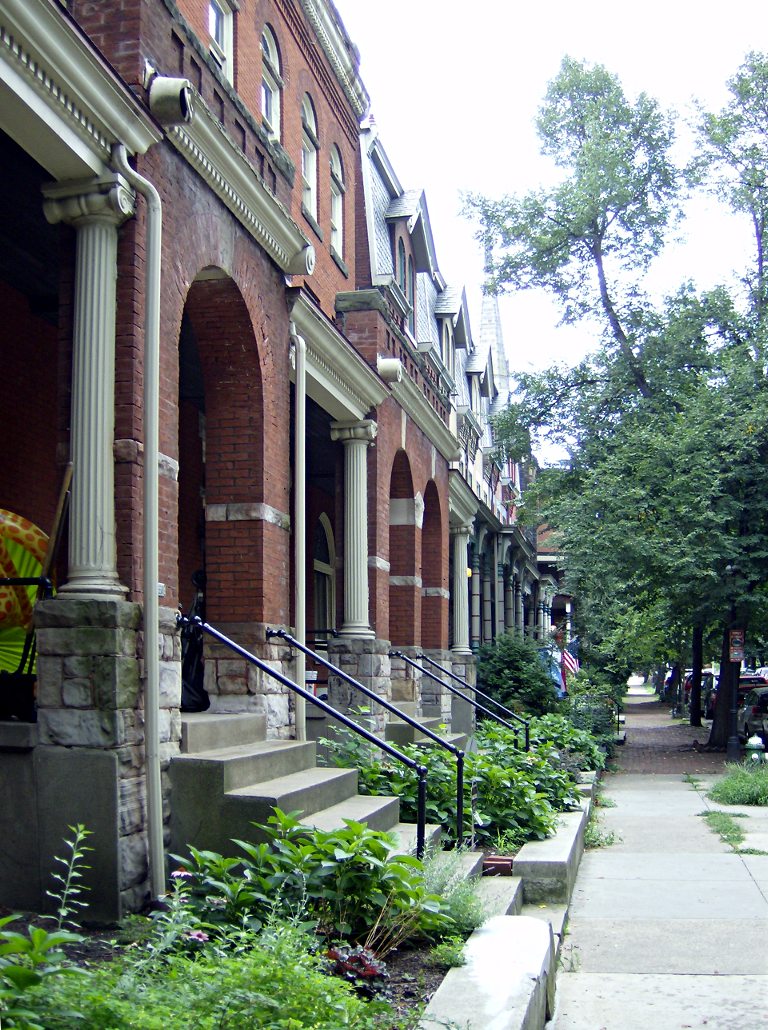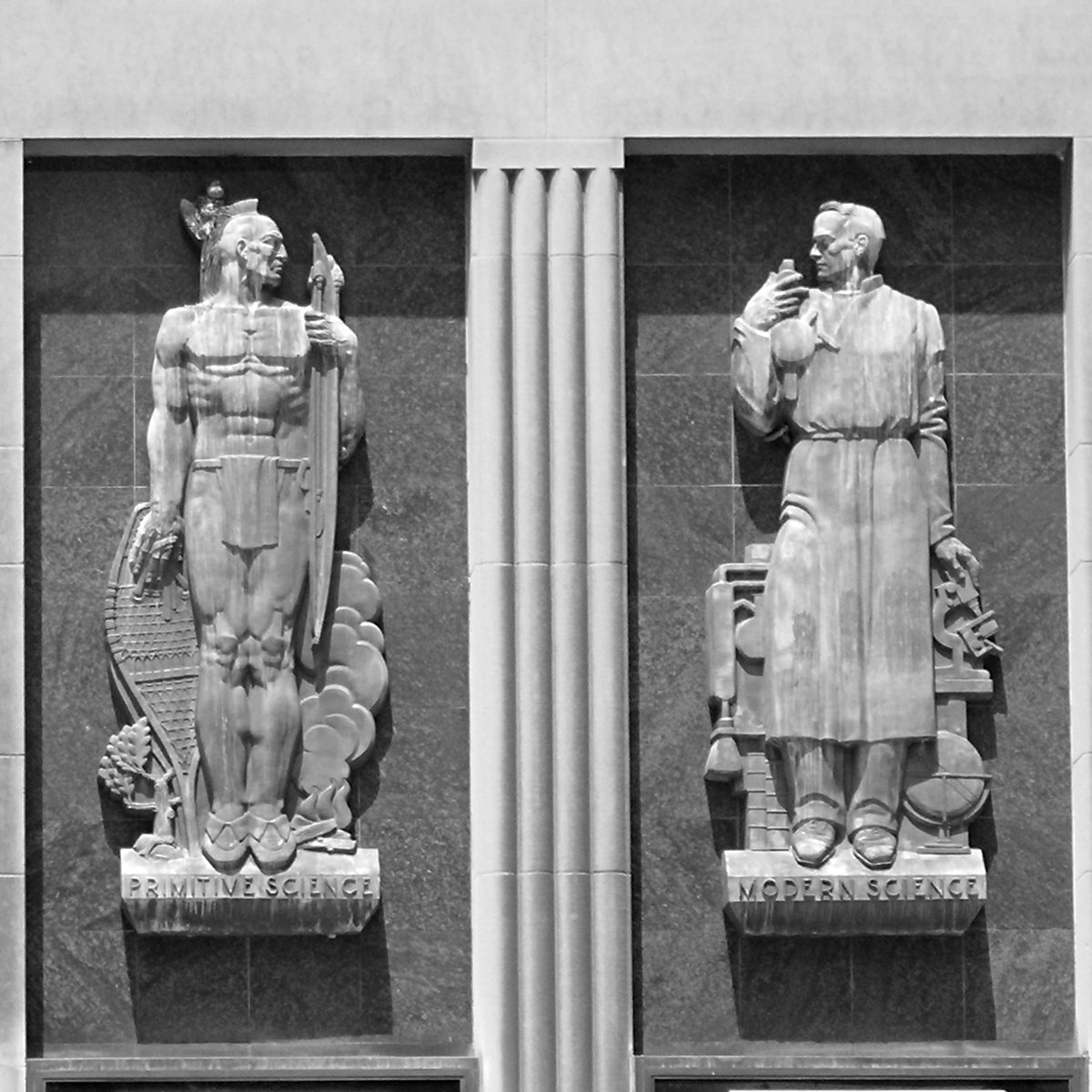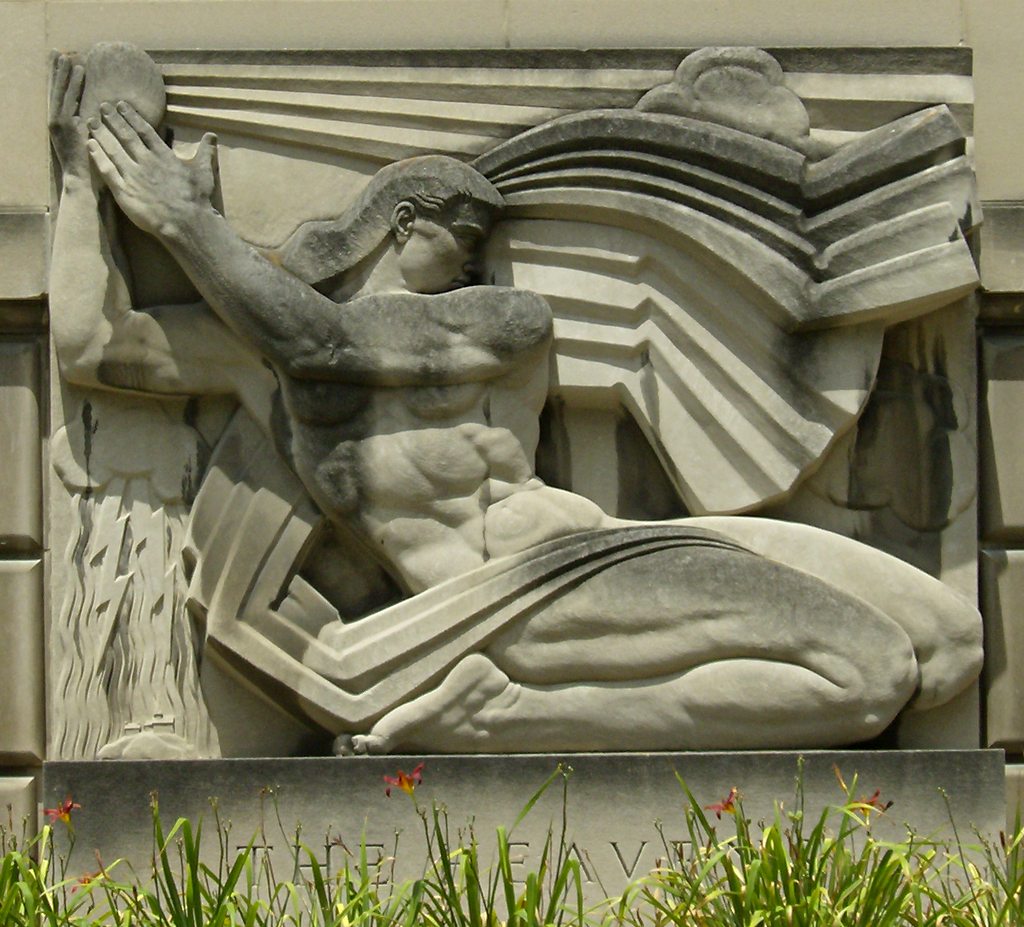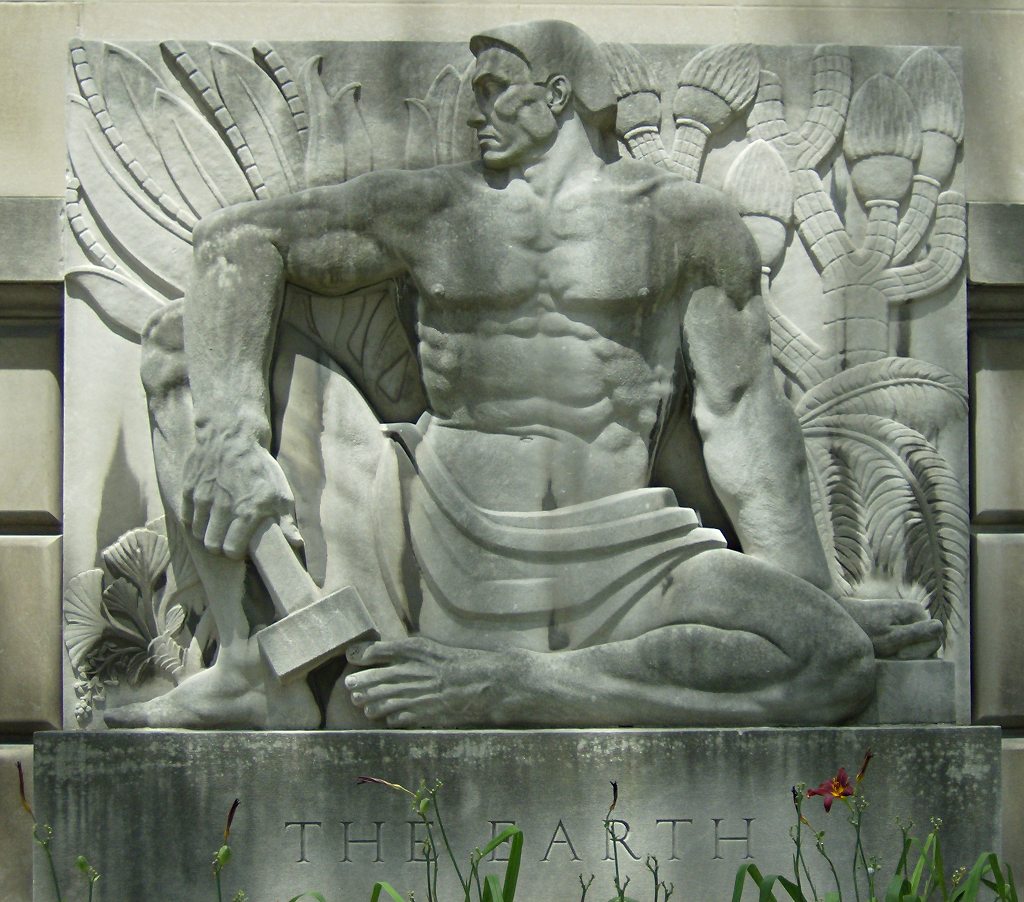The new Alcoa Building, like the old, is a tribute to aluminum. Here we see the end of it that faces Sandusky Street, at the foot of the Andy Warhol Bridge.
-
Alcoa Building, North Shore
-
Bald Eagles at the National Aviary
-
Burrowing Owl at the National Aviary
-
Sidewalks of Allegheny West
-
Primitive Science, Modern Science
These bronze reliefs by Sidney Waugh stand over what was once the main entrance to the Buhl Planetarium and Institute of Popular Science (to give its full title). From loincloths to lab coats is less of a distance than you might think: Waugh took pains to illustrate the remarkable cleverness of the “primitive” American Indians who had long-distance communication (via smoke signals) and snowshoes, an invention Waugh chose specifically because it arose only in North America and nowhere else. As for Modern Science, we should not underestimate the difficulty of imparting dignity to a figure in a lab coat, a feat Waugh has carried off with aplomb. To a world used to the opposition of modern science against primitive superstition, Waugh presents the two figures as engaged in exactly the same enterprise.
-
Col. James Anderson, Founder of Free Libraries
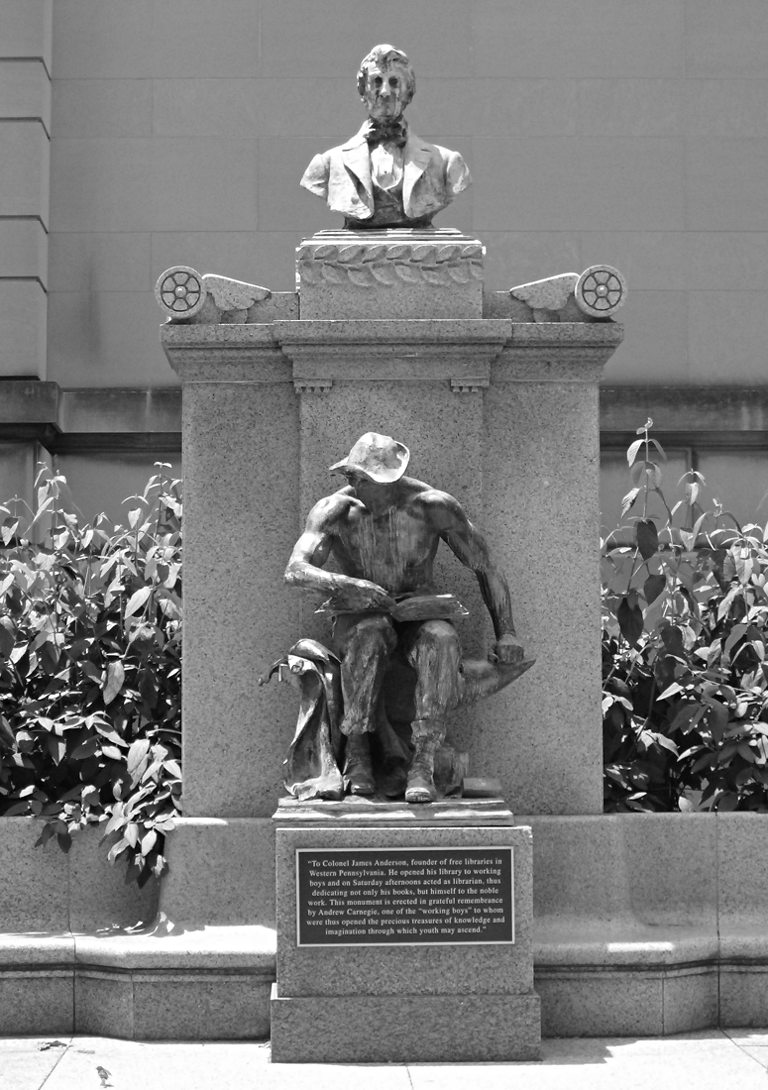
Who was the founder of free libraries in Western Pennsylvania? You might say Andrew Carnegie, but Mr. Carnegie himself will be the first to correct you. As a boy, he spent his Saturdays in the library of Colonel James Anderson, whose selfless example inspired Carnegie to become the greatest patron of libraries in the history of civilization. This monument, put up by Carnegie in 1904 near his Free Library in Allegheny, may look humble at first glance, but for the art Carnegie engaged possibly the greatest American sculptor of all time, Daniel Chester French. It still stands beside the Buhl Planetarium, just across the plaza from the old Carnegie Free Library in Allegheny Center.
The inscription is obviously more recent than the monument, but probably duplicates the wording of a lost plaque:
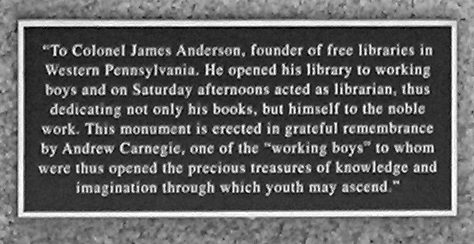
Allegheny Center is a short walk from the North Side subway station.
-
Carnegie Free Library, North Side

Update: Since this article was written in 2012, the library building has been taken over by the Children’s Museum. Its future now seems assured.
Andrew Carnegie gave this library to the city of Allegheny, where it was built at the main intersection of the city in 1889. By some standards this was America’s first public library. Carnegie had given Braddock a library earlier (that library, in spite of the collapse of the town around it, still stands), and other philanthropists had given libraries to the public, like Enoch Pratt’s in Baltimore. But those were run as private charities with money from an endowment given by the philanthropist. Allegheny’s was built by Carnegie, but run by the city government.
In the 1960s, the library and its neighboring music hall were among the very few buildings spared when the rest of central Allegheny was demolished to make way for an ambitious urban-fantasy project called Allegheny Center. The redevelopment was not very successful, and today the concrete plazas that replaced downtown Allegheny are unnaturally quiet in the middle of the day. After the building was damaged in a lightning strike a few years ago, the library itself moved to a new building a few blocks up Federal Street. The music hall is still active as a theater, and there are a few offices in the library building, but this grand entrance is no longer in use.
Allegheny Center is a short walk from the North Side subway station.
-
Carnegie Hall, North Side

Allegheny’s own Carnegie Hall was built in 1890, right next to the library Carnegie gave to the city a year earlier. The library building still stands, though the library has moved a few blocks up Federal Street; the music hall is now used as the “New Hazlett Theater,” a venue for miscellaneous performances. The library and music hall were among the very few buildings spared when the heart of Allegheny was demolished in the 1960s for the “Allegheny Center” project, which was either an ambitious attempt at creating the modern ideal of a city or an audacious stab at the heart of Pittsburgh’s conquered rival, depending on how you look at it.
Carnegie Hall is a short walk from the North Side subway station.
Addendum: The architects were Smithmeyer & Pelz.
-
Birds at the National Aviary
UPDATE: Thanks to a kind correspondent from the National Aviary (see the comments below), we have corrected some misinformation about the penguins you see in these pictures.
The National Aviary is one of Pittsburgh’s most unexpected treasures. This is the largest collection of birds in America, and it exists only because of a series of curious historical accidents.
Henry Phipps gave the city of Allegheny a conservatory (he would later give the much more famous one in Schenley Park to Pittsburgh). In 1952, the city of Pittsburgh added birds and made it into a “conservatory and aviary.”
In 1991, Mayor Masloff, faced with a funding crisis, decided to close the aviary and transfer the birds to the zoo. Old Pa Pitt himself called the mayor’s office to protest: he made a very pretty little speech about how the aviary was not just a local amusement but a unique national treasure, ending by saying that he wanted one voice to be recorded in favor of keeping the aviary.
“One voice?” squeaked the beleaguered secretary who had answered his call.
It turned out that most of Pittsburgh had called the mayor’s office that day; and, like a good public servant, Mayor Masloff listened to us. She found a way to turn the aviary over to a private foundation. Not long after, the United States Congress designated it the National Aviary, and since then it has doubled in size.
Father Pitt could blither on about how important the National Aviary is, how it houses some species that are entirely extinct in the wild, how it sponsors vital conservation programs, and so on. But what he really wants to do is show you pictures of birds.
The African Rockhopper Penguins have their own section called Penguin Point, where you can see them under the water as well as on the rocks. The fuzzy, unkempt-looking penguin is going through what a correspondent from the National Aviary calls a “catastrophic molt,” in which it gains a lot of weight, sheds all its feathers, and looks just awful for a while.
Aptly named Scarlet-Headed Blackbirds perch in the Grasslands free-flight room. There are three big free-flight rooms in which the birds are at liberty to fly around the human visitors.
Black Kites dive for tasty bits of chicken in the Skydeck show on the roof. Here birds of prey are allowed to fly free, though they have tiny radio-telemetry units to track them just in case they should decide to fly a bit too far. No bird has ever been lost from this show, however, because the birds, being no fools, always come back to where the food is.
The National Aviary is a short walk from the North Side subway station.
-
The Heavens and the Earth
These stunning Art Deco reliefs by Sidney Waugh decorate the old Buhl Planetarium, now part of the Children’s Museum. The Carnegie Science Center , which replaced the Buhl Planetarium as our chief science museum (and has the old Zeiss projector from the Buhl Planetarium on display), is big and exciting, but it was not built at a time when the meeting of science and art was as fruitful as it was in the Moderne era.

